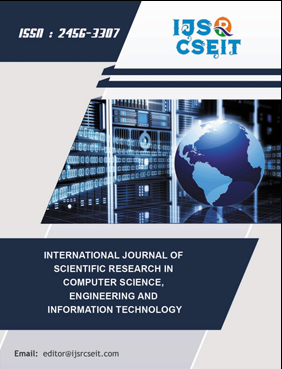FlowOptix : A Traffic Signal Control and Management System
DOI:
https://doi.org/10.32628/CSEIT24103119Keywords:
Traffic Congestion, Vehicle Count, Image Processing, Machine Learning, Object Detection, YOLOAbstract
The innovation in the field of vehicles has led to the access of vehicles in high reach, thus increasing the number of vehicle counts. But this increase count has created a need of managing the congestion of vehicles on road in a more efficient way. The traditional system and approach of the traffic signal systems isn’t adequate enough to tackle the increasing congestion. The traditional system tends to be efficient where the count is sparse, as the density of vehicles on a particular side of road increases or if the traffic is comparatively larger on one side than other side in such case the approach fails. Hence, the introduced system redesigns the traffic signal system that is static switching to signal switching based on real-time traffic management. So, in this project the switching time of signal will be decided based on real time image detection with good accuracy in dense traffic. This practice can prove its most effectiveness in releasing the congested traffic at an efficient and faster rate.
📊 Article Downloads
References
“Augmenting Traffic Signal Control Systems for Urban Road Networks With Connected Vehicles” Craig B. Rafter, Bani Anvari, Simon Box, Tom Cherrett IEEE transactions on Intelligent Transportation Systems, vol. 21, no. 4, April 2020. DOI: https://doi.org/10.1109/TITS.2020.2971540
“Global traffic scorecard,” INRIX, Kirkland, WA, USA, Tech. Rep. 1, 2017.
B. Waterson and S. Box, “Quantifying the impact of probe vehicle localisation data errors on signalised junction control,” IET Intell. Transp. Syst., vol. 6, no. 2, p. 197, 2012. DOI: https://doi.org/10.1049/iet-its.2010.0113
D. I. Robertson, “TRANSYT: A traffic network study tool,” Transp. Road Res. Lab., Tech. Rep. LR253, 1969.
G. R. Vincent and J. R. Peirce, “MOVA: Traffic responsive, selfoptimising signal control for isolated intersections,” Transp. Road Res.Lab., Tech. Rep. RR170, 1988.
M. G. Bell, “Future directions in traffic signal control,” Transp. Res. A, Policy Pract., vol. 26, no. 4, pp. 303–313, Jul. 1992. DOI: https://doi.org/10.1016/0965-8564(92)90018-3
P. Diakaki, D. Kotsialos, and Wang, “Review of road traffic control strategies,” Proc. IEEE, vol. 91, no. 12, pp. 2041–2042, Dec. 2003. DOI: https://doi.org/10.1109/JPROC.2003.819606
S. J. Agbolosu-Amison, A. W. Sadek, and W. Eldessouki, “Inclement weather and traffic flow at signalized intersections: Case study from Northern New England,” Transp. Res. Rec., vol. 1867, no. 1,pp. 163–171, Jan. 2004. DOI: https://doi.org/10.3141/1867-19
H. C. Council, “Intelligent transport systems strategy package report,” Hertfordshire County Council, Hertford, U.K., Tech. Rep. 1, 2011.
P. Hunt, D. Robertson, R. Bretherton, and R. Winton, SCOOT: A Traffic Responsive Method Coordinating Signals. Crowthorne, U.K.: TRRL, 1981.
P. R. Lowrie, “Scats, sydney co-ordinated adaptive traffic system: A traffic responsive method of controlling urban traffic,” Roads Traffic Authority New South Wales, Darlinghurst, Austrailia, Tech. Rep. 1, 1990.
R. Engineering, “InSync: The traffic Bot,” Rhyhtm Eng., Lenexa, KS, USA, Tech. Rep. 1, 2019.
Downloads
Published
Issue
Section
License
Copyright (c) 2024 International Journal of Scientific Research in Computer Science, Engineering and Information Technology

This work is licensed under a Creative Commons Attribution 4.0 International License.




